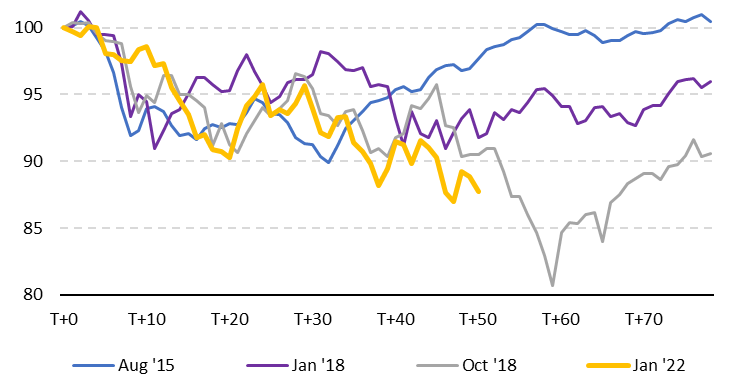- Yesterday, retail traders had the weakest buying day since Biden's election rally, Vanda found.
- The longer this year's market slump continues, the more retail traders will tire, the analysts said.
- "Only a market bottom and a sustained rebound in momentum would flip this dynamic."
Retail traders are tired.
On Tuesday, as the S&P 500 broke its days-long losing streak, retail investors had their weakest day of stock buying — with just $387 million of inflows — since Joe Biden's election rally and the 2020 COVID-19 sell-off, Vanda Research found.
Retail traders have become known for their propensity to "buy the dip" when the market is tumbling, a strategy that aims to snap up discounts and ride a rebound. But the longer this year's market sell-off continues — stoked by Russia's attack on Ukraine and the Fed's plan to hike interest rates — the more retail traders will suffer fatigue, the analysts said, adding that a single day of gains, like yesterday's, only exacerbates their apathy.
Besides fatigue, another retail-trader symptom is now risk aversion. As this year's portfolio losses mount, individual investors are shying away from taking on more risk, the analysts said.
"Only a market bottom and a sustained rebound in momentum would flip this dynamic," Vanda researchers Marco Iachini and Giacomo Pierantoni wrote in a Tuesday note.
On Wednesday, market sentiment continued to be more upbeat after peace talks between Russia and Ukraine had reportedly progressed. On top of the positive signs from Eastern Europe, investors also awaited an expected rate hike from the US central bank.
The current weak retail inflows are akin to the 2018 market slump, Vanda analysts said, and that means the risk of retail-trader capitulation is about to enter a "danger zone" as this year's sell-off reaches its last leg.
"The probable bottom of the current sell-off," though, likely won't be until retail traders become net sellers on a down day — the opposite of the proverbial buy-the-dip mentality – they said.


